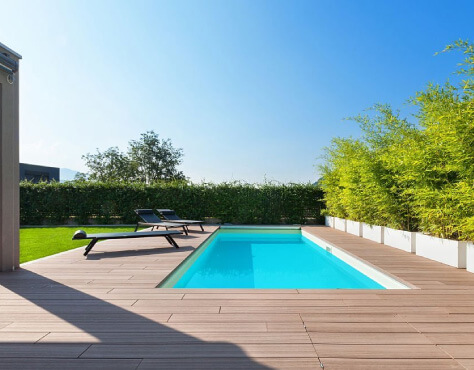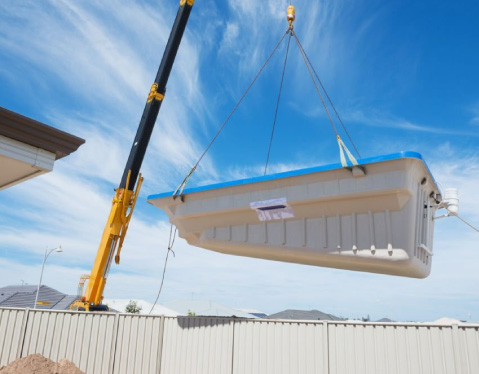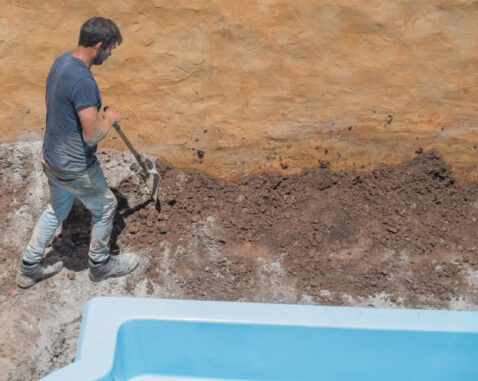Still don’t dare to have fiberglass pools in your home or business? The speed of installation could end up convincing you to install your own pool before spring begins and enjoy the warm days ahead.

Installation site visit
Installation specialists should go to the pool site to learn about soil conditions, weather, and determine the number of workers needed to complete the project as quickly as possible.
Ground preparation
Once the above points have been defined, and after having obtained the necessary permits, the ground for the installation begins to be prepared. For this, it will be analyzed if there are public sewage or drainage services below where the pool will be, so that a conflict is not caused in the short term.
Once the above has been discarded, the excavation area begins to be prepared by outlining the contour of the pool with the dimensions it will have.
Excavation
Once the pool layout is spray painted on the ground, the installers will bring in a bulldozer to remove the soil following the contour of the pool. A few more inches are usually left to prevent the fit from being too tight, and also the bottom is dug a few inches deeper than necessary to add fill material or gravel, thus providing a smooth and sturdy area for the bottom of the the swimming pool.
In addition, a sump or natural drainage line is installed in this hole at the deepest end of the pool to balance hydrostatic pressure.

Placement
Once the site has been prepared, the installers will bring the pool in for placement with a crane, spacer bar, and lifting straps so that the pool surface is not marred while still being level and positioned to the bottom.
It should be noted that the placement is not carried out on the same day of the excavation, it can take from three days to a week to place it since the necessary time will be waited for the concrete bottom to dry correctly and not cause future problems, such as subsidence. .
In this phase, the electrical installation for heating or lighting must be carried out.
Placement
Once installed and leveled, the next step is to add water and fill with sand or gravel the contour of the pool that was slightly larger. This process is known as “blocking” the pool. The pool is then filled with water to create pressure on the inner and outer walls of the pool, and PVC pipes are connected to the drain to test the water pressure and detect if there is a leak. Once any problems have been ruled out, the filling process is finished until it is at ground level to place the cover.
Electrical and plumbing installation
In this stage, the pump, filter, heater, lights, electrical and heating equipment that have been chosen with the pool will be installed. In the previous phase, the plumbing and electricity lines were prepared, so it is only necessary to connect the equipment and check that it works properly.
Concrete pouring
This is the final stage, in which concrete is poured around the pool so that it is firmly attached to the ground and ready for use.
It is important that all steps are followed so that fiberglass pools have a beautiful, concrete-like appearance and long life. The process can take about two weeks, depending on the machinery, the type of concrete or concrete and the number of people who come to the installation, however, it is a very short time compared to a concrete pool, and its cost. is significantly lower.


to install in your home or business, or for you to install and sell the most beautiful and best quality models to your customers. Contact us through our form for more information and quotes, we will gladly assist you.

